Knight’s Oak Armour Chest – 15th Century – High Middle Ages – Périgord – [ME148]
AUX-ROIS-LOUIS’S TREASURES FILMING AT CHÂTEAU DE BIRON IN PÉRIGORD FOR THE SERIES ‘FORTUNE DE FRANCE’ Adapted from Robert Merle’s literary fresco, a writer native to Sarlat, the “Fortune de France” series directed by Christopher Thomson took up residence at Château de Biron, seat of one of the oldest baronies in Périgord, in spring 2023. It…

![Knight’s Oak Armour Chest – 15th Century – High Middle Ages – Périgord – [ME148] Impressive in size, this oak chest comes from a fortress in Périgord. It remains a testament to its past grandeur. Its mission was, in its time, to welcome back from battles the weapons and armour of the Knight Master of the house. It is rare to be able to observe this type of castle furniture, as very few of its comrades-in-arms were produced and most have now disappeared.](https://www.aux-rois-louis.com/wp-content/uploads/2024/04/ME148_P1680364-600x600.webp)

![Studded Travel Trunk – 18th Century – China – [ME126] This studded travel trunk originates from the mountainous region of Hubei, also known as the Province of a Thousand Lakes, situated in central China. The ochre and green hues that surface are original. Upon closer inspection of the facade, vertical inscriptions in Chinese characters can be discerned. The rings are loops for the ropes that allowed this travel trunk to be carried through the rugged mountains of Hubei, either by man or mule. The studded iron fittings reinforcing its corners enabled it to withstand shocks and reach us in a beautiful state of preservation.](https://www.aux-rois-louis.com/wp-content/uploads/2024/02/ME126_P1680293-600x600.webp)
![Larch wood table for cracking walnuts (énoisage) – 19th century – Haute-Loire – [MP051]] This authentic "paysan" rural piece of furniture, from around the foothills of Velay, is a testimony of the spirit of friendly mutual assistance among neighbours who went to one another's homes to do the "énoisage" all together during the late evening "velhada", sometimes improvising friendly little dances to the sound of clogs, "cabrettes" and accordions.](https://www.aux-rois-louis.com/wp-content/uploads/2023/10/MP051_P1670111-600x600.webp)
![Cherry Wood Salon Table – Louis XIV – 18th Century – South West – [ME112] Here is a small cherry wood salon table commissioned by a castle in Périgord in the 18th century. It follows the codes of the Louis XIV style, featuring a moulded balustrade base connected by an H-shaped stretcher and blackened mouldings on the side rails. It has a drawer that spans its entire width.](https://www.aux-rois-louis.com/wp-content/uploads/2023/09/ME112_654-600x600.webp)
![Little Gilded Wooden Mirror – Louis XIV – 18th century – Midi Pyrénées – [ME 110] This little Louis XIV gilded mirror illustrates the savoir-faire of 18th century miroitiers, guillocheurs, stuqueur and gold leaf gilder. It will bring happiness in a secret boudoir where it will have the place of honor.](https://www.aux-rois-louis.com/wp-content/uploads/2023/12/ME110_P1660637-600x600.webp)
![Peasant Water Jug in Glazed Terracotta – 19th Century – Auvergne – [PA078] This glazed terracotta water jug comes from a countryside workshop in Brioude, Haute-Loire, France. This type of Auvergnat pottery workshop operated only in winter when farmers were free from fieldwork. The clay is red due to its natural iron oxide content. This raw clay was grogged, meaning it was mixed with river sand and crushed fired clay.](https://www.aux-rois-louis.com/wp-content/uploads/2023/12/PA078_P1670085-600x600.webp)
![Oak countryside table-desk – 19ᵗʰ century – Sarlat district in Périgord Noir – [MP053] This countryside "bureau" has all the distinctive features of those used in th XIXth century to collect the "octroi" when goods arrived in towns on market day. Its rustic solid oak structure rests upon a H-shaped stand off. It has a large drawer one could keep receipts and money.](https://www.aux-rois-louis.com/wp-content/uploads/2023/12/MP053_P1670159-600x600.webp)
![Inseparable salt and flour boxes in walnut - 18th century - Provence - [MP025]](https://www.aux-rois-louis.com/wp-content/uploads/2021/11/MP025_153x900-600x600.jpg)
![Grand Repoussé Brass Mirror – 19th Century – France – [ME106] Beveled mirror, triple frame adorned with small flowers, acanthus leaves at each corner, and a frontispiece featuring cornucopias surmounting an antique bowl – these are the decorative elements of this large embossed brass mirror inspired by the style of Louis XIV.](https://www.aux-rois-louis.com/wp-content/uploads/2023/08/ME106_P1660604-600x600.webp)
![Petrified Oil Jar – 19th Century – Saintonge / Charente – [PA077] Statufied and adorned with an emerald scarf, its gentle belly fears no ravages of time. On the contrary, it enhances it, turning this Charente pottery into a star jar, or dare I say, an authentic oil of the upscale districts.](https://www.aux-rois-louis.com/wp-content/uploads/2023/07/PA077_P1660669-600x600.webp)
![Two Twisted Walnut Columns – 18th Century – Midi-Pyrénées – [ME105] Here are two impressive twisted walnut columns from the 18th century. Initially, they adorned the base of the monumental staircase in a public building located in the Midi-Pyrénées region. Now, they are prepared to enhance the charm of a film set or a private residence.](https://www.aux-rois-louis.com/wp-content/uploads/2023/07/ME105_P1660601x1200-600x600.jpg)

![Musician’s Lectern in Walnut – Late 18th century – Southwest region of France – [ME109] Here is an antique musician's lectern made of walnut from the 18th century in the Southwest region of France. It features a double openwork music stand resting on a solid wooden tablet, which contributes to its stability. Its base consists of three legs arranged in the manner of tree roots, ensuring its balance.](https://www.aux-rois-louis.com/wp-content/uploads/2023/07/ME0109_P1660615-600x600.webp)
![Louis XVI cherrywood jump chest from the 18th century – South West of France – [ME086] This Louis XVI chest of drawers is referred to as a "jump chest" due to its unusual height of its feet. Originating from the Provinces located in the South West region of the Kingdom of France, Guyenne and Gascony, this unique, sturdy and refined piece was made in the 18th century from thick cherrywood boards.](https://www.aux-rois-louis.com/wp-content/uploads/2023/01/ME086_P1660303-600x600.webp)
![Two inseparable walnut armed chairs – Louis XIII – Quercy – [ME089] Examples of seats considered comfortable under Louis XIII, here are two armed chairs with almost straight backrests whose softness lies rather in the way of the armrests, finished in a butt, and the turning, in the Renaissance spirit, of the uprights connecting backrests and armrests at the base.](https://www.aux-rois-louis.com/wp-content/uploads/2022/12/ME089_448C-600x600.webp)
![Walnut drop-leaf writing desk – 18th century – Périgord – [ME090] Drop-leaf secretary made in Périgord in the 18th century in beautiful walnut boards. It is composed of a crossbow chest of drawers with two large drawers, surmounted by a sloping flap that opens to become a writing desk.](https://www.aux-rois-louis.com/wp-content/uploads/2022/12/ME090_P1660457b-600x600.webp)
![Kettle, pie dish and decaliter jug in red copper – 18ᵉ century – South West – [MP035] [MP036] [MP037] Three copper containers of exceptional size: an enormous kettle, the matching pie dish and an equally imposing pitcher. All are in red copper and date from the 18th century, a period during which they were manufactured using the same processes in the South West of France.](https://www.aux-rois-louis.com/wp-content/uploads/2022/10/ME035-036-037_426-600x600.webp)
![Small two-piece walnut sideboard – 18ᵗʰ century – South West France – [ME073] Small two-piece sideboard made in the 18th century in the South West of France. It has a cornice, a picture rail and two largely molded drawers, four doors decorated with diamond points and it rests on two straight feet at the back and two onion feet at the front.](https://www.aux-rois-louis.com/wp-content/uploads/2022/08/ME073_P1660102n-600x600.webp)
![Oak farm table – 18ᵗʰ century – Cantal – [MP031] Oak farm table – 18ᵗʰ century – Cantal – [MP031]](https://www.aux-rois-louis.com/wp-content/uploads/2022/08/MP031_093-600x600.webp)
![Winemaker’s table in oak and poplar – 19ᵗʰ century – Champagne – [MP034] Winemaker's table in oak and poplar – 19ᵗʰ century – Champagne – [MP034]](https://www.aux-rois-louis.com/wp-content/uploads/2022/07/MP034_P1660234-600x600.webp)
![Desk table in oak and chestnut – Louis XIII – 17th century – Quercy – [ME074] This desk table was probably the prerogative of a high dignitary of the Customs corps, in charge of a flourishing trading post located on the banks of the Olt, the former name of the Lot.](https://www.aux-rois-louis.com/wp-content/uploads/2022/06/ME074_116-600x600.jpg)
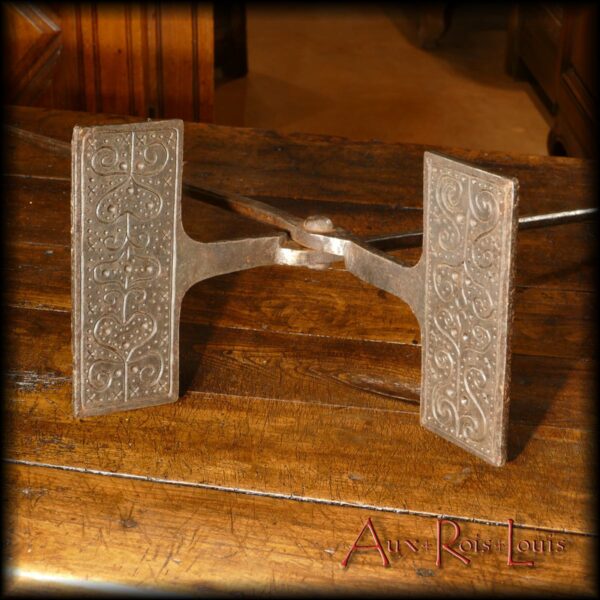
![Imperial oil jug – 19ᵗʰ century – Quercy – [PA072]](https://www.aux-rois-louis.com/wp-content/uploads/2022/04/PA072_P1660219x1200-600x600.jpg)
![Walnut sideboard – 18ᵗʰ century – South-West – [MP030]](https://www.aux-rois-louis.com/wp-content/uploads/2022/04/MP030_740-600x600.jpg)
![Salt chest armchair – chestnut - cherry - poplar – 19th century – Quercy – [MP029]](https://www.aux-rois-louis.com/wp-content/uploads/2022/03/MP029_733-600x600.jpg)

![Terracotta ham pot – 19th century – Charente – [PA067]](https://www.aux-rois-louis.com/wp-content/uploads/2022/02/PA067_715-600x600.jpg)
![Sideboard chest – Louis XV – 18ᵗʰ century – South West France - [ME070]](https://www.aux-rois-louis.com/wp-content/uploads/2021/12/ME070_P1650586x900-600x600.jpg)
![Small walnut sideboard – Louis XIV – 17ᵗʰ century – Périgord – [ME069]](https://www.aux-rois-louis.com/wp-content/uploads/2021/12/ME069_P1650574x900-600x600.jpg)
![Two oil jugs - late 18th century early 19th century - Lot Valley, Quercy - [PA062] [PA063]](https://www.aux-rois-louis.com/wp-content/uploads/2021/12/PA062-63_P1650160-600x600.jpg)
![Walnut storage cabinet – 18ᵗʰ century – France – [ME066]](https://www.aux-rois-louis.com/wp-content/uploads/2021/11/ME066_P1650134x900-600x600.jpg)
![Walnut pantry cabinet - 19th century - Provence - [MP026]](https://www.aux-rois-louis.com/wp-content/uploads/2021/11/MP026_P1650178x900-600x600.jpg)
![Walnut sideboard with scallop shell – Louis XV – 18th century – Lot Valley – [ME067]](https://www.aux-rois-louis.com/wp-content/uploads/2021/11/ME067_144-600x600.jpg)

![Jam cabinet in cheery – late 18th century – Périgord – [MP023]](https://www.aux-rois-louis.com/wp-content/uploads/2021/11/MP023_084x900-600x600.jpg)
![Two water jugs – 19th century – Les Landes – [PA060] [PA061]](https://www.aux-rois-louis.com/wp-content/uploads/2021/11/PA060_61_099x900-600x600.jpg)
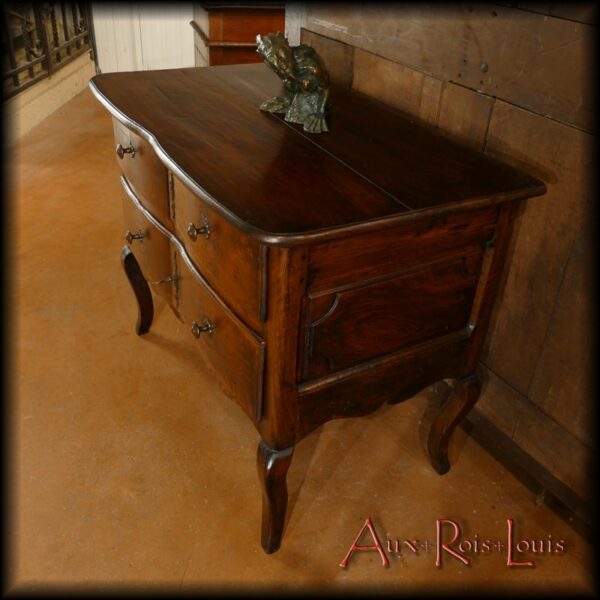
![Half-chest of drawers in cherry wood – 18th century – South West – [ME059]](https://www.aux-rois-louis.com/wp-content/uploads/2021/10/ME059_P1600975-600x600.jpg)
![Three water jugs – 19th century – Périgord – [PA055] [PA056] [PA057]](https://www.aux-rois-louis.com/wp-content/uploads/2021/10/PA055-56-57_P1600970-600x600.jpg)
![MP022_P1600984 Beech butcher's block - early 20th century - [MP022]](https://www.aux-rois-louis.com/wp-content/uploads/2021/08/MP022_P1600984-600x600.jpg)


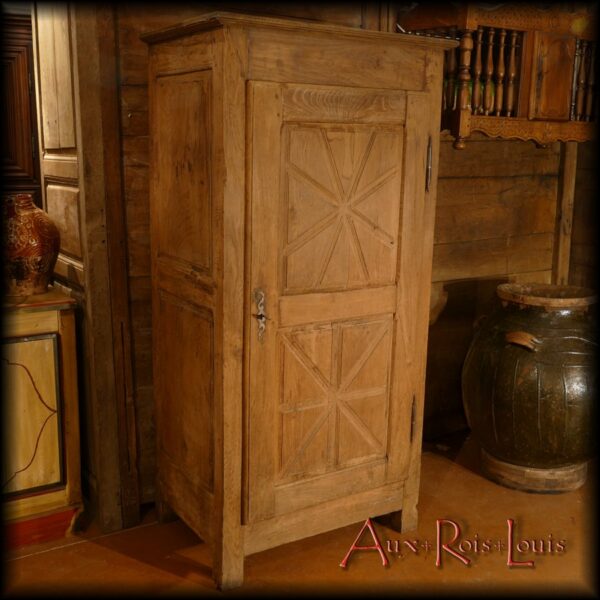


![ME053_P1600527 Office cabinet in walnut - Louis XIII - 17th century - Périgord - [ME053]](https://www.aux-rois-louis.com/wp-content/uploads/2021/04/ME053_P1600527-600x600.jpg)
![MP020_P1600516x900 Louis XV style country sideboard in walnut, oak and elm – 19ᵗʰ century – South West – [MP020]](https://www.aux-rois-louis.com/wp-content/uploads/2021/04/MP020_P1600516x900-600x600.jpg)
![ME052_P1600504 Curved chest of drawers in nuanced blond walnut – 18ᵗʰ century – Périgord - [ME052]](https://www.aux-rois-louis.com/wp-content/uploads/2021/04/ME052_P1600504-600x600.jpg)
![MP019_P1600496 Vaisselier dresser-drainer in cherrywood – 19ᵗʰ century – South West – [MP019]](https://www.aux-rois-louis.com/wp-content/uploads/2021/04/MP019_P1600496-600x600.jpg)
![MP017_P1600257 Oval walnut cellar table – 18ᵗʰ century – Lot – [MP017]](https://www.aux-rois-louis.com/wp-content/uploads/2021/02/MP017_P1600257-600x600.jpg)
![ME044_184 Pantalonnière cupboard in cherry wood – Louis XIV – 18ᵗʰ century – Gironde – [ME044]](https://www.aux-rois-louis.com/wp-content/uploads/2020/11/ME044_184-600x600.jpg)
![ME043_P1600159 Louis XV style “homme-debout” in walnut - 18ᵗʰ century - Périgord - [ME043]](https://www.aux-rois-louis.com/wp-content/uploads/2020/11/ME043_P1600159-600x600.jpg)


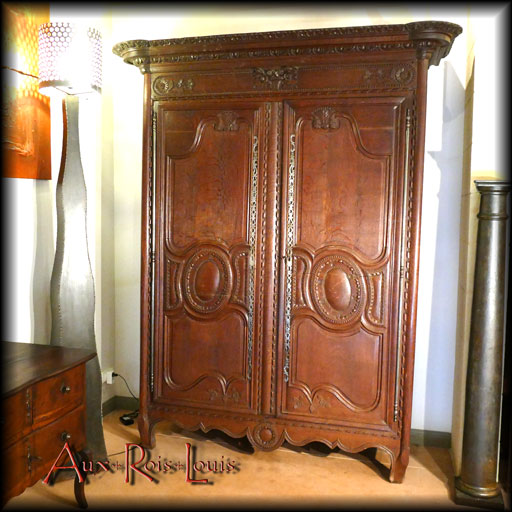
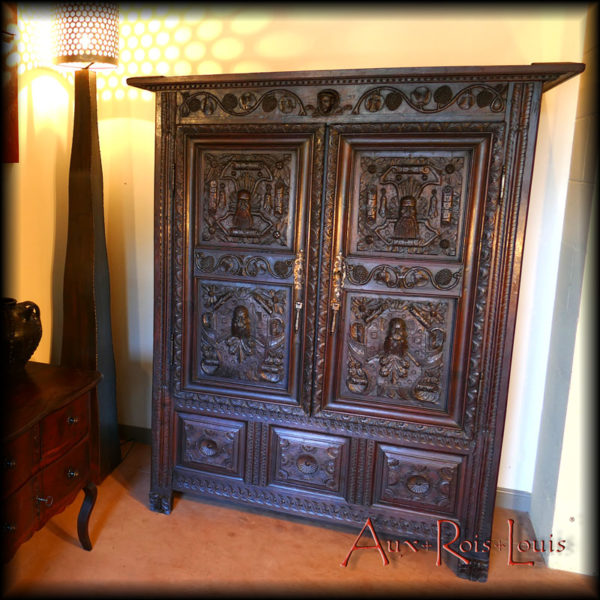
![Walnut wood chest – 18ᵗʰ century – Bordeaux Region Walnut wood chest – 18ᵗʰ century – Bordeaux Region – [ME005]](https://www.aux-rois-louis.com/wp-content/uploads/2022/07/ME005_N04_P1350548_2-600x600.webp)
![Louis XIII kitchen cupboard 17ᵗʰ century – Haute‑Loire Louis XIII kitchen cupboard 17ᵗʰ century – Haute‑Loire – [MP002]](https://www.aux-rois-louis.com/wp-content/uploads/2022/07/N17_P1470819-600x600.webp)

![Louis XIV walnut armoire – late 17ᵗʰ century – Périgord Louis XIV walnut armoire – late 17ᵗʰ century – Périgord – [ME002]](https://www.aux-rois-louis.com/wp-content/uploads/2022/07/ME002_P1500449carrex800-600x600.webp)

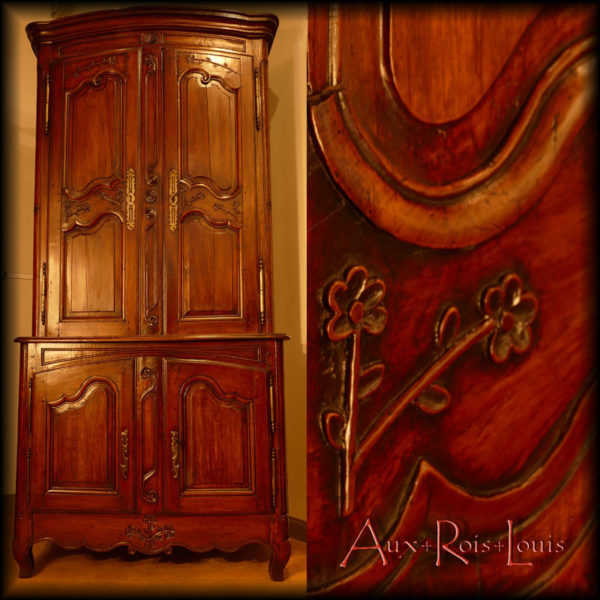


![Walnut coffer – 18ᵗʰ century – Périgord Walnut coffer – 18ᵗʰ century – Périgord – [ME010]](https://www.aux-rois-louis.com/wp-content/uploads/2022/07/ME010_N10_P1500391-600x600.webp)